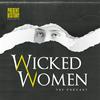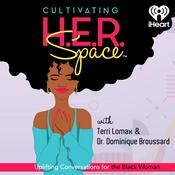52 episodes

Cecily Neville
2025/11/10 | 55 mins.
She was called proud. Ambitious. Dangerous. Born a duchess, widowed by war, and mother to two rival kings, Cecily Neville moved through England’s most treacherous century with the calm precision of a strategist. While men fought for thrones, she fought for legacy. Some saw her as the cold matriarch who helped ignite the Wars of the Roses, a woman willing to brand her own grandsons illegitimate to protect her favorite son’s claim. Others saw a survivor. Pious, dignified, and unbroken, even as her family destroyed itself in pursuit of power. Was she a mother or a monarch in disguise? The line between the two has never been clear.Today, I’m speaking with Annie Garthwaite, author of The King’s Mother, a powerful new novel (and second in her series) that reimagines Cecily’s later years. Years often dismissed or forgotten by history. We talk about how Cecily navigated the dangerous politics of York and Lancaster, how her reputation was shaped by those who feared women’s influence, and what it means to reclaim a voice history tried to silence. Hosted on Acast. See acast.com/privacy for more information.

Women Who Ruled the World
2025/10/07 | 52 mins.
What do Elizabeth I of England, Maria Theresa of Austria, Tamar of Georgia, Liliʻuokalani of Hawaii, and the Nawab Begums of Bhopal have in common? Seemingly very little. They are divided by time, language, religion, culture, and family circumstances. But what binds them together is that all reigned as queens in their own right. Women who claimed power in a world that rarely allowed it.In her latest book, Women Who Ruled the World, historian Dr. Elizabeth Norton takes us across 5,000 years of history to uncover the extraordinary stories of female monarchs. From Merneith, who ruled Egypt nearly five millennia ago, to Elizabeth II, who became the world’s longest-ruling woman, Dr. Elizabeth Norton shows how rare and remarkable it was for a woman to seize the throne and what it meant when she did. These queens were warriors, diplomats, and visionaries, often standing as the only woman in the room, defying expectations and reshaping history. Today, Elizabeth joins me to discuss how these women not only ruled their nations, but challenged the very idea of power itself. Hosted on Acast. See acast.com/privacy for more information.

Victoria Woodhull
2025/9/06 | 58 mins.
A suffragist, a spiritualist, a stockbroker, an author, and in 1872, the first woman to run for president of the United States, Victoria Woodhull was a visionary who defied expectations. But her legacy is complicated. Her advocacy of “free love” and willingness to challenge Victorian norms made her infamous in her own time. Her clashes with leading suffragists and her scandalous run ins with the law left her branded as dangerous, even immoral. For decades afterward, she was written out of mainstream histories, remembered more for controversy than for courage.Now, Eden Collinsworth’s new book, The Improbable Victoria Woodhull, offers a fresh take. In today’s episode, we’ll explore Woodhull’s story and how this new biography helps us see her not just as a heroine or a villain, but as a woman whose choices and contradictions still have something to teach us today.Content Warning: The topics covered in this episode may not be suitable for all audience. Listener discretion is advised. Hosted on Acast. See acast.com/privacy for more information.

Reading Women Through Portraits
2025/8/11 | 57 mins.
In today’s episode, I’m joined by Gemma Haigh, now known to many as The Plant Parlour (where she champions cultivating lush botanical spaces), but who first made her mark as curator and researcher on the exhibition Georgian Women: Female Portraits by John Russell RA. During that project, she researched 19 female portraits in Guildford Heritage’s acclaimed Russell collection, interrogating how Russell’s pastel portraits of daughters, wives, and social figures both reflected and resisted gendered expectations in Georgian Britain.Gemma guides us through the power dynamics embedded in pastel and paint: how Russell’s art objectified and elevated his sitters; what it says about the male gaze and elite femininity; and how those images gain new meaning when reinterpreted through a feminist lens today. We discuss how modern viewers can learn to read these portraits with fresh eyes and explore what their stories reveal about identity, visibility, and portraiture as a form of social control. Hosted on Acast. See acast.com/privacy for more information.

Story of a Murder: Discussion with Hallie Rubenhold
2025/7/08 | 54 mins.
On July 13, 1910, on a quiet suburban street in Camden Town, London, a grisly discovery shattered the illusion of domestic peace. Beneath the floorboards of 39 Hilldrop Crescent, the dismembered remains of music hall performer Belle Elmore were unearthed. The Victorian house, prim, respectable, and unassuming, had become the scene of one of the most sensational murders in British history.As the press descended, the story gripped the world. Belle’s husband, the mild-mannered doctor Hawley Harvey Crippen, and his lover, the demure and seemingly obedient Ethel Le Neve, had vanished, fleeing across the Atlantic in disguise. It was the first time in history that wireless telegraphy would be used to capture fugitives in real time. Their arrest aboard the Montrose, just before reaching Canada, turned the case into a media spectacle of unprecedented scale. London newspapers dubbed it “The Crime of the Century.”But behind the headlines lies a much more complicated story, one shaped by gender, class, performance, and power.In today’s episode of I’m joined by award-winning historian Hallie Rubenhold, author of the book Story of a Murder: The Wives, The Mistress, and Dr. Crippen. In our discussion we focus on the two women most deeply entangled in this tale: Belle Elmore, and Ethel Le Neve. This isn’t just a story about murder. It’s about who gets to be remembered, who gets vilified, and how history treats women who refuse to conform.Disclaimer: This episode discusses topics that may not be suitable for all audiences. Viewer discretion is advised. Hosted on Acast. See acast.com/privacy for more information.
More Education podcasts
Trending Education podcasts
About Wicked Women: The Podcast
Listen to Wicked Women: The Podcast, Motivation Daily by Motiversity and many other podcasts from around the world with the radio.net app

Get the free radio.net app
- Stations and podcasts to bookmark
- Stream via Wi-Fi or Bluetooth
- Supports Carplay & Android Auto
- Many other app features
Get the free radio.net app
- Stations and podcasts to bookmark
- Stream via Wi-Fi or Bluetooth
- Supports Carplay & Android Auto
- Many other app features


Wicked Women: The Podcast
download the app,
start listening.





































